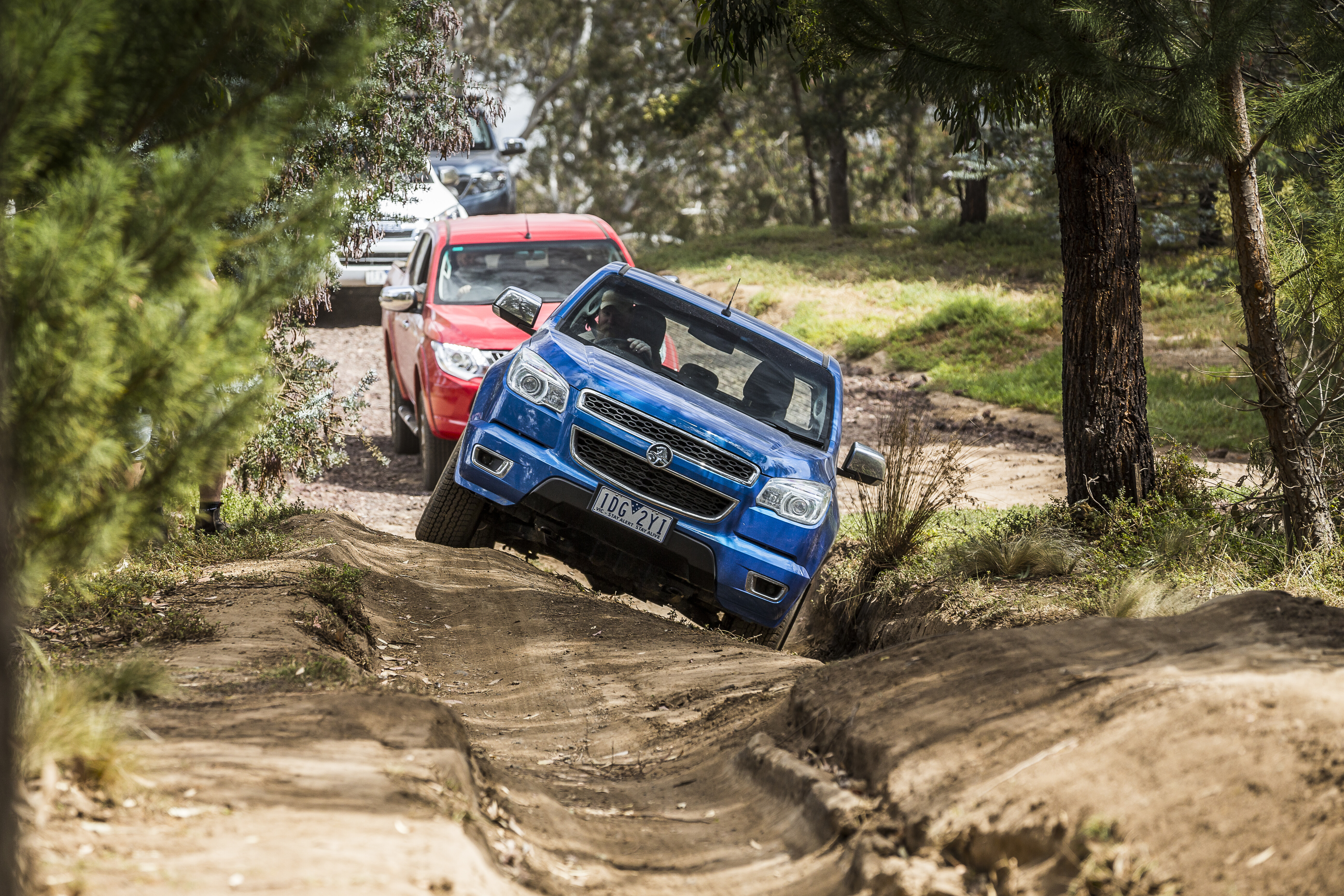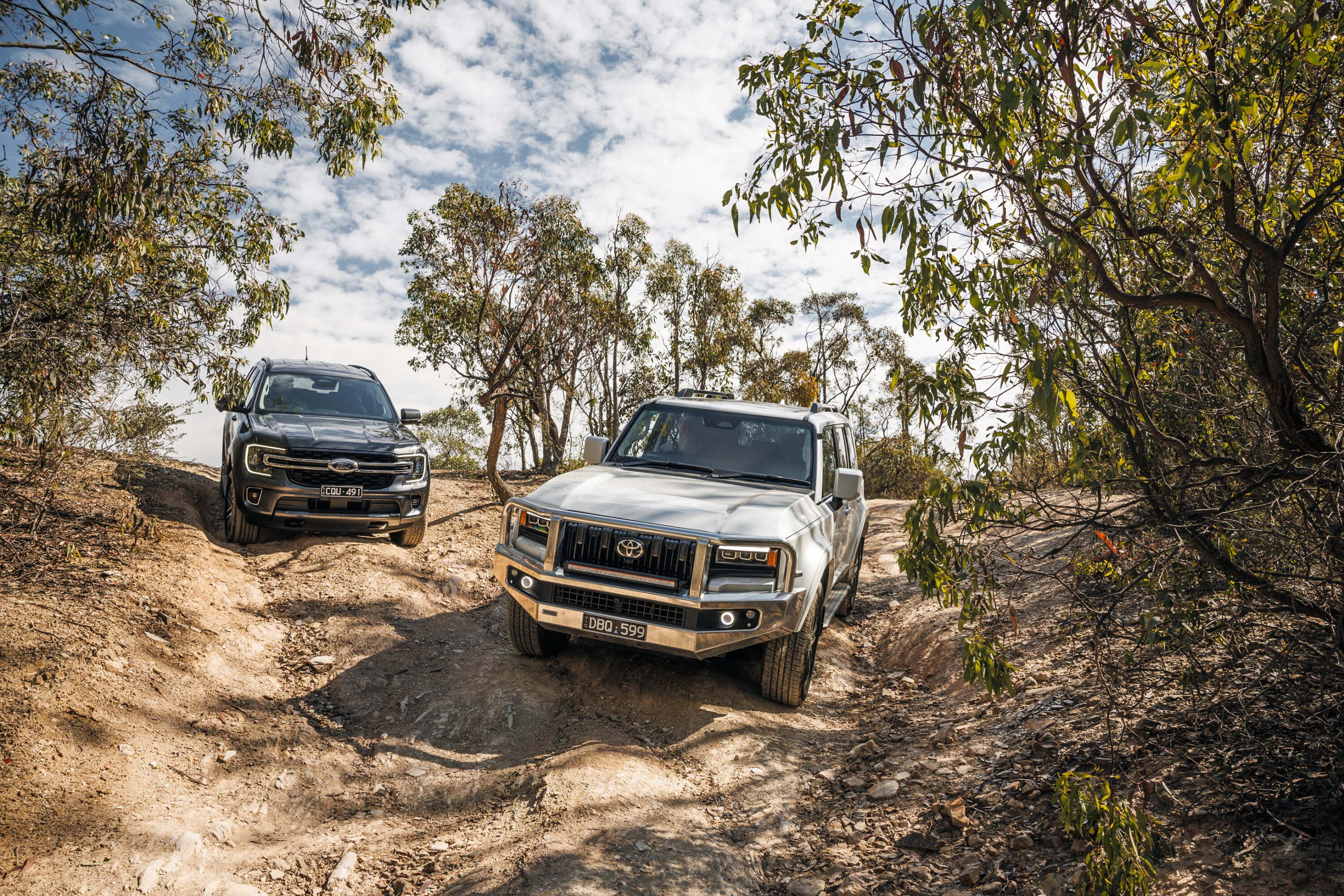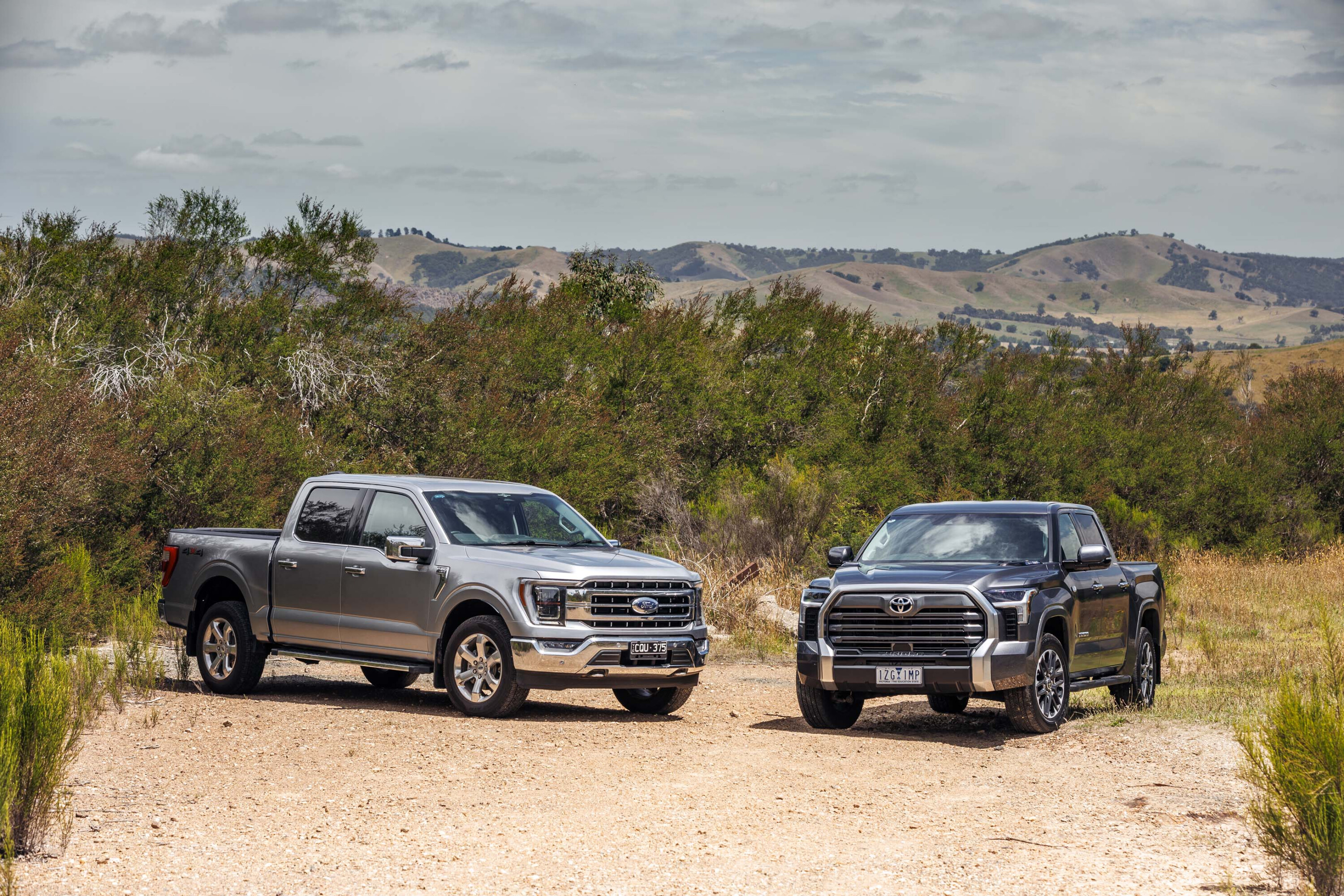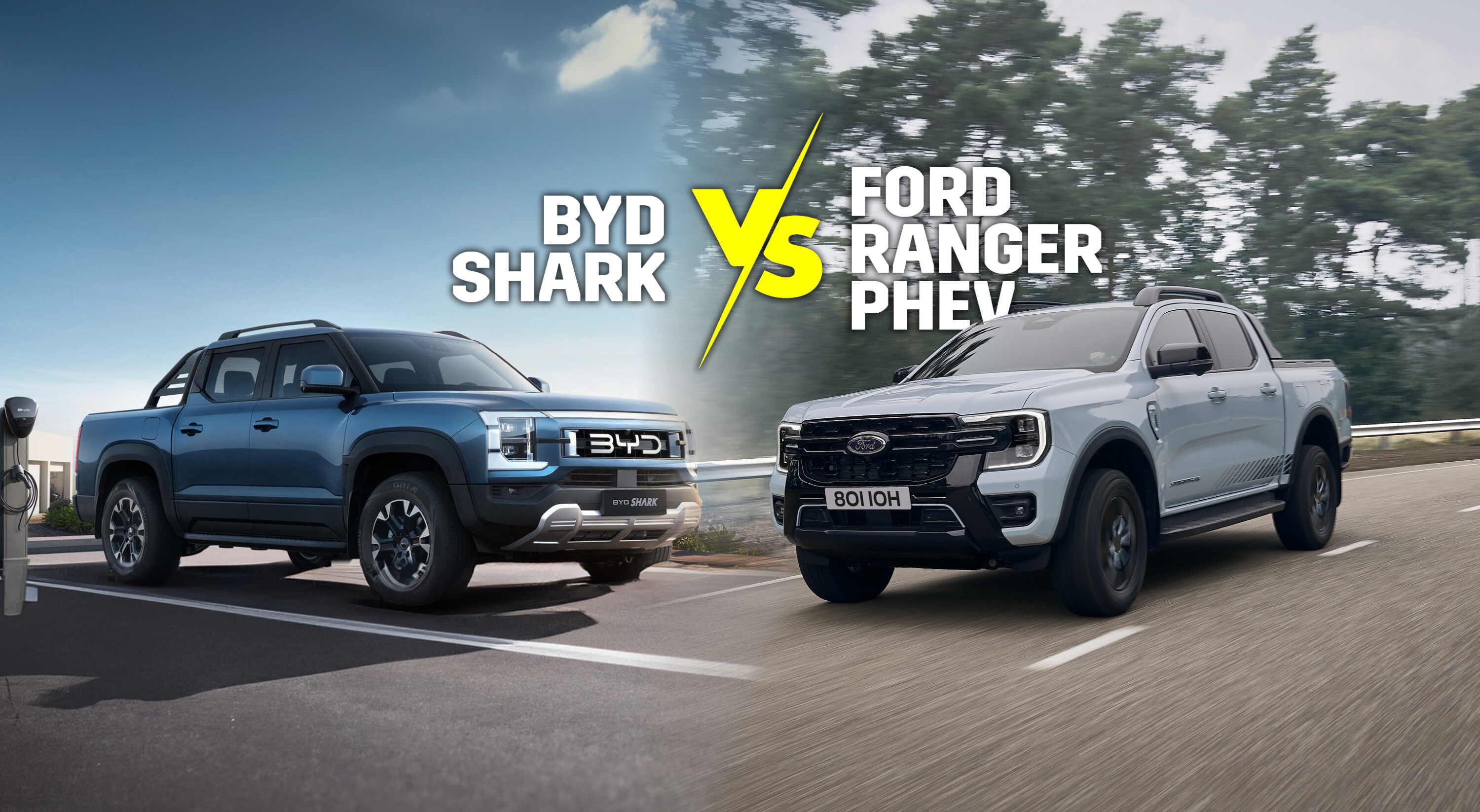So you’re looking to buy a dual cab with the idea of doing a few simple and common enhancements to turn it in to a decently capable off-road tourer and explorer, but are unsure of the best starting point?
Well, there’s good reason to give this some thought. All of the popular late-model and current dual cabs may come with four-wheel drive, all have electronic traction control (ETC), most also have dual-range gearing, and most have a driver-switched rear differential lock, but all that actually means very little when it comes to determining how well all these utes work off-road.
More telling are differences in wheel travel, the ‘smarts’ of the ETC calibration, and the way the rear locker (when fitted) is integrated with the electronic chassis control systems, ETC in particular. And if you think these differences are only incremental and count for little in the real world, think again, as the difference from the top-tier off-road performers to the off-road strugglers is huge.
If you’re a footy fan, it’s like comparing the team that has just won the premiership compared to the team that’s just collected the wooden spoon. Both may play on the same field, but at nowhere near the same level.
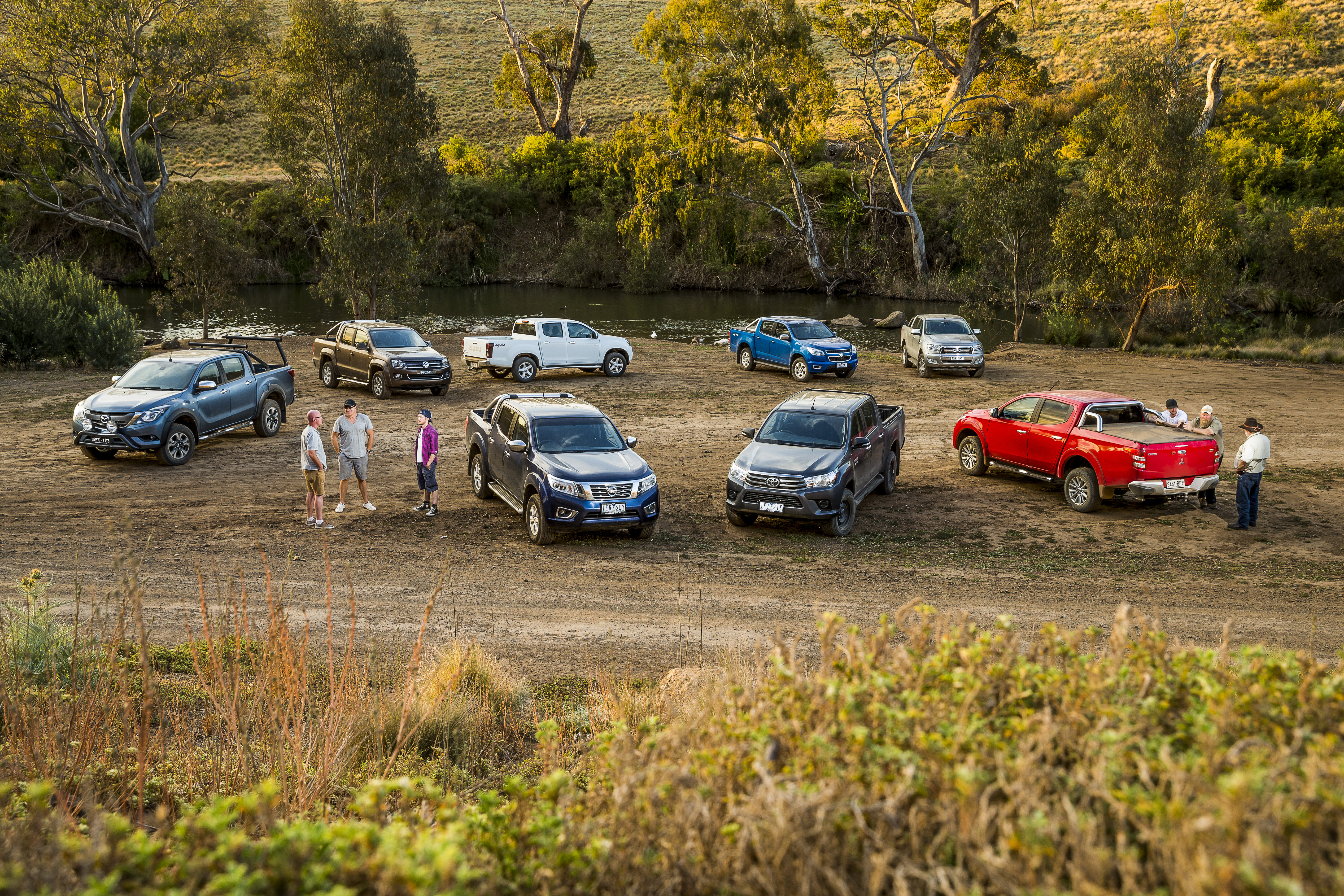
Here we take a quick look at how today’s popular dual cabs (largely all current generation and available new or used) shape up with the basics of what makes them effective and useful off-road, or not so much, as the case may be. This is all based on a decade of testing these dual cabs in multi-vehicle comparisons, including segment-wide mega tests, all too numerous to mention individually.
We are working on the assumption that you’ll be looking at more off-road suitable tyres, perhaps on different wheels, and possibly a mild suspension lift with new springs and dampers. Apart from a bullbar and other protection, and perhaps a snorkel, that’s about it. If you’re buying second hand, these mods may already have been made. This is not a vehicle you’re going to significantly re-engineer from the ground up on a space-program budget.
A general comment about gearboxes too, as just about all of the dual cabs here (the Ranger 2.0-litre being the exception), are available with either a manual or an automatic gearbox.
Automatics are generally better for off-road ease of driving and especially for climbing steep low-range ascents, and on soft sand. This is true even if you like the better driver connection a manual provides and a manual’s more rewarding on-road driving experience. If you’re buying second-hand, you’ll find automatics are more common than manuals anyway, as this has been the buyer preference in the ute market for a good while now.
Toyota Hilux – 2015 to current
The current eighth-generation Toyota Hilux arrived here in late 2015, with full sales kicking off in 2016. Notably, it came with an all-new 2.8-litre four-cylinder turbo-diesel, replacing the 3.0-litre diesel used in the previous generation Hilux, and with new six-speed manual and automatic gearboxes. An all-new 2.4-litre diesel was also offered in base-spec models, while a 4.0-litre petrol V6 was carried over from the previous Hilux.
After a number of changes to models and equipment since launch, and the dropping of the 4.0-litre petrol six along the way, the 2.8 was upgraded to 150kW and 500Nm (from 130kW and 450Nm) thanks to new fuel-injection and turbo systems in 2020.

When it comes to getting serious off-road, the Hilux is blessed by having the longest wheel travel among the current crop of utes across its whole model range. At the rear, where it counts most, there’s more than half a metre – 520mm in fact – of wheel travel. That’s seriously good for showroom-stock, leaf-spring suspension. More wheel travel means more secure contact with the ground and therefore less reliance on the electric traction-control system or differential locks to prevent the wheels from spinning. It’s as simple as that.
The Hilux adds to its class-leading wheel travel an ETC system that’s specifically calibrated for off-road use and not just for on-road use, which is the norm with ETC. Toyota does off-road specific ETC (they call it A-TRC) exceptionally well, and largely off the back of the time and investment put in to making the LandCruiser very off-road capable.
The Hilux also has a driver-switched rear differential lock on most 4×4 models, but engaging the rear locker cancels the ETC, not just on the rear axle, which is a given, but also on the front axle (as an engineering decision), so you effectively end up with an open front diff once the rear locker is engaged. So a win-lose situation, not a win-win.
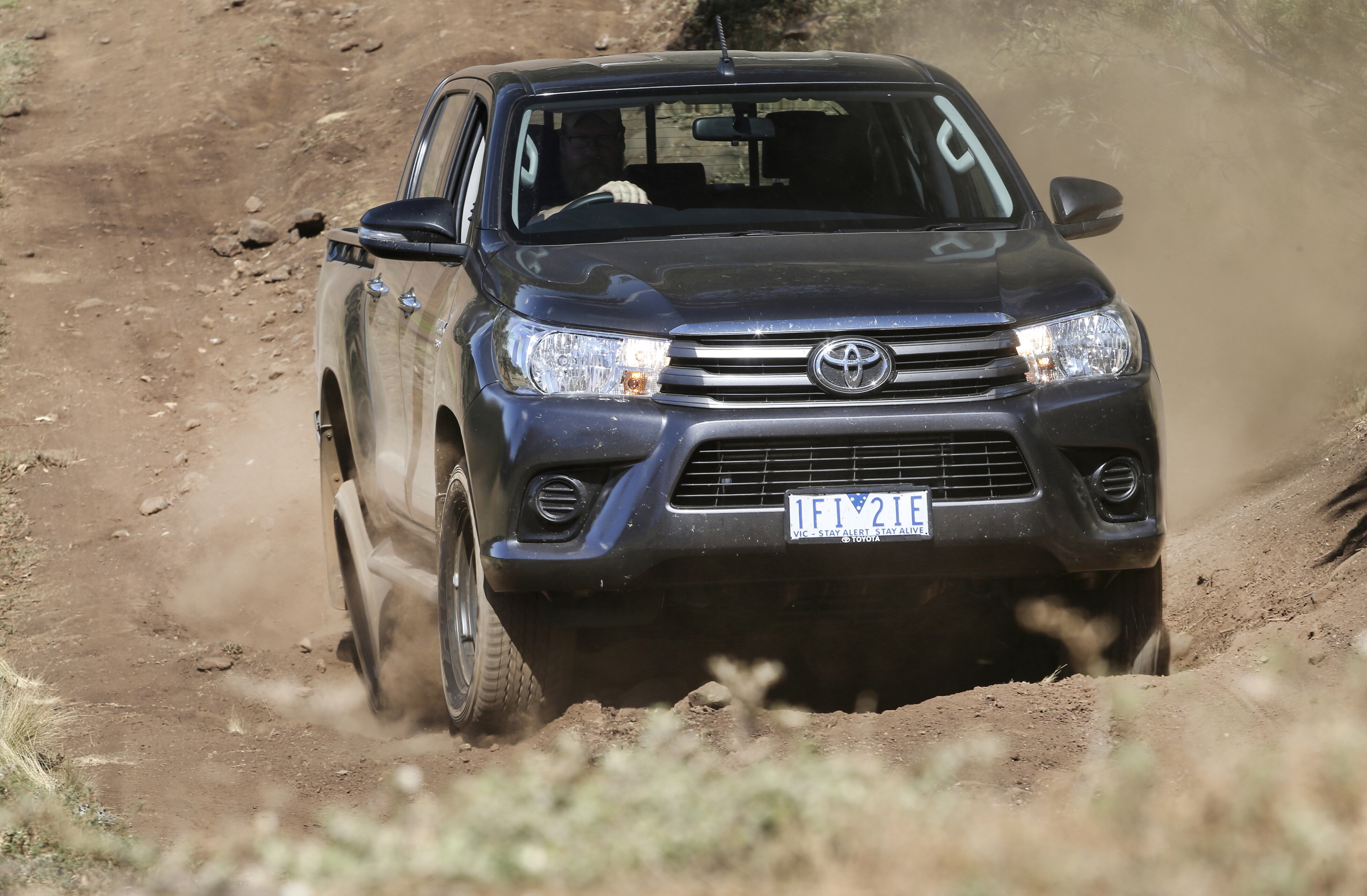
For most off-road driving, the Hilux generally performs better without the rear locker engaged, as that leaves the effective ETC working at both ends rather than losing the ETC across the front axle. Why did Toyota go this way? It’s to prevent any extra strain on the driveline and, as usual, Toyota puts reliability first. The conservative head engineer won the argument.
As is, the Hilux is still a top-tier off-road performer, matched only by some Ford Rangers among the mainstream models and some Volkswagen Amaroks, but it could have been a stand-alone winner – at least until the unique Ranger Raptor came along.
For manual buyers, it’s worth noting that SR and SR5 2.8 models come with what Toyota calls an ‘Intelligent Manual Transmission’, which modulates the throttle to help make low-range shifts more seamless. It works nicely. A number of accessory-equipped Hilux models have also come from the factory.
Ford Ranger – 2012 to current
The current generation Ranger dates back to 2011 and was a ‘genuine’ ground-up Ford design, ending a long run of Ford relying on Mazda product in this sector of the international ute market. It was a global Ford effort, with the development centred right here in Australia.
Its keynote design was a 3.2-litre in-line five-cylinder diesel first seen four years earlier as the top-specification engine in Ford’s third-generation Transit commercial van range. It’s still the biggest engine in this ute class, and offered with both six-speed manual and six-speed automatic gearboxes. A surprisingly good 2.2-litre diesel four (also used in the last of the ‘classic’ Land Rover Defenders) was offered in lower-spec models.
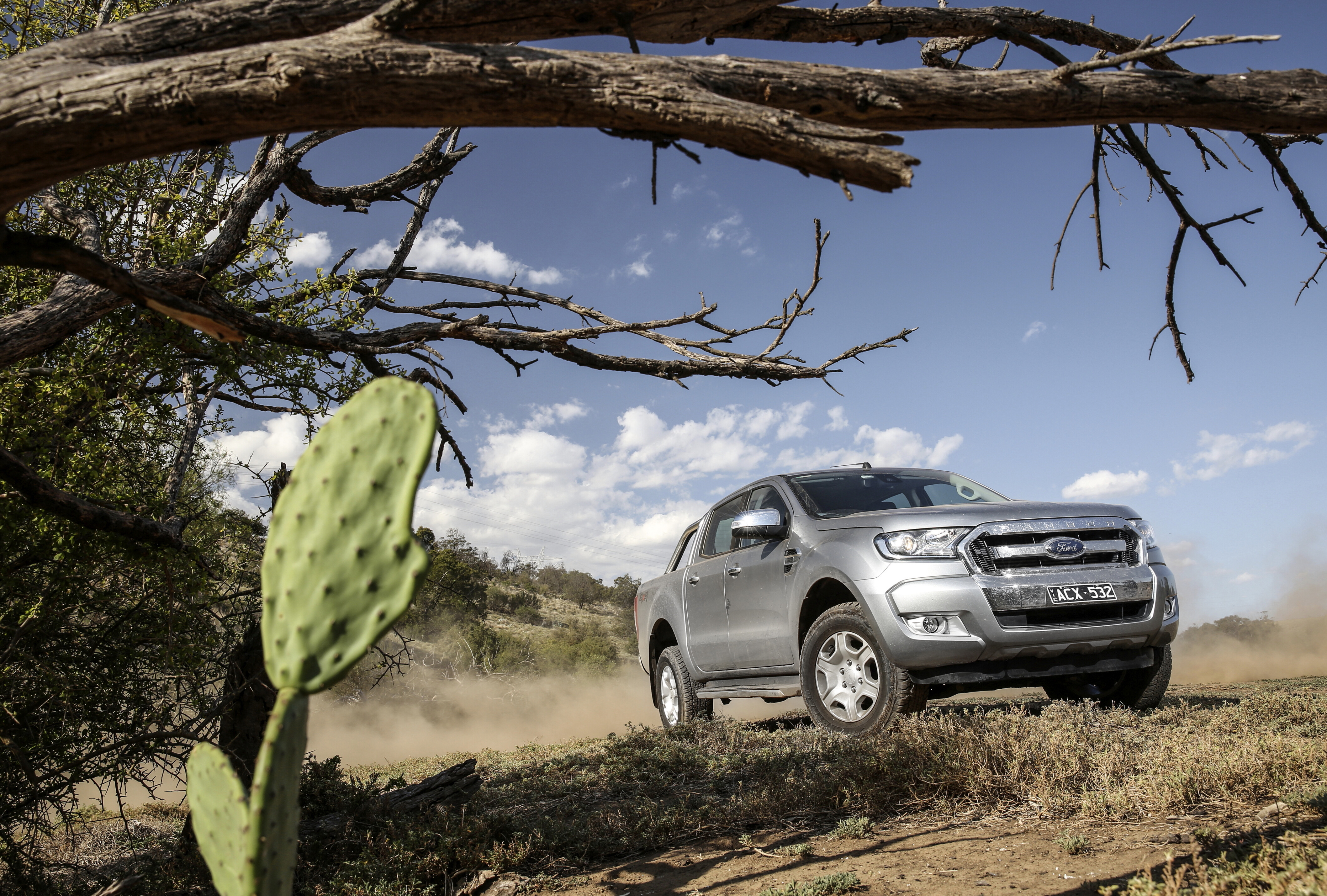
A significantly upgraded Ranger was announced in 2015 (arriving in September), while 2018 saw an all-new 2.0-litre four-cylinder bi-turbo diesel (complete with a 10-speed automatic – no manual) offered as a slightly more powerful (on paper at least) – alternative to the 3.2 five-cylinder and as the stand-alone powertrain in the bold and brilliant Raptor model.
Putting aside the Raptor for a minute, what hasn’t changed with all this is the basics of the chassis which offers wheel travel not too far short of the Hilux and as good as or better than anything else in the class, which places the Ranger (any Ranger) in good stead. Decent effective ground clearance too, despite the longest-in-class (3200mm) wheelbase, also helps.
Starting from its initial sound base, things got better with the late 2015 upgrade with a number of detailed but significant changes. The Ranger had always had a driver-switched rear locker (on most 4×4 models), but in 2015, the way the locker integrated in to the chassis electronics was changed. Engaging the rear locker no longer killed the ETC on both axles as it had done previously, but left the ETC active up front, so a win-win situation. Off-road, the difference was notable.
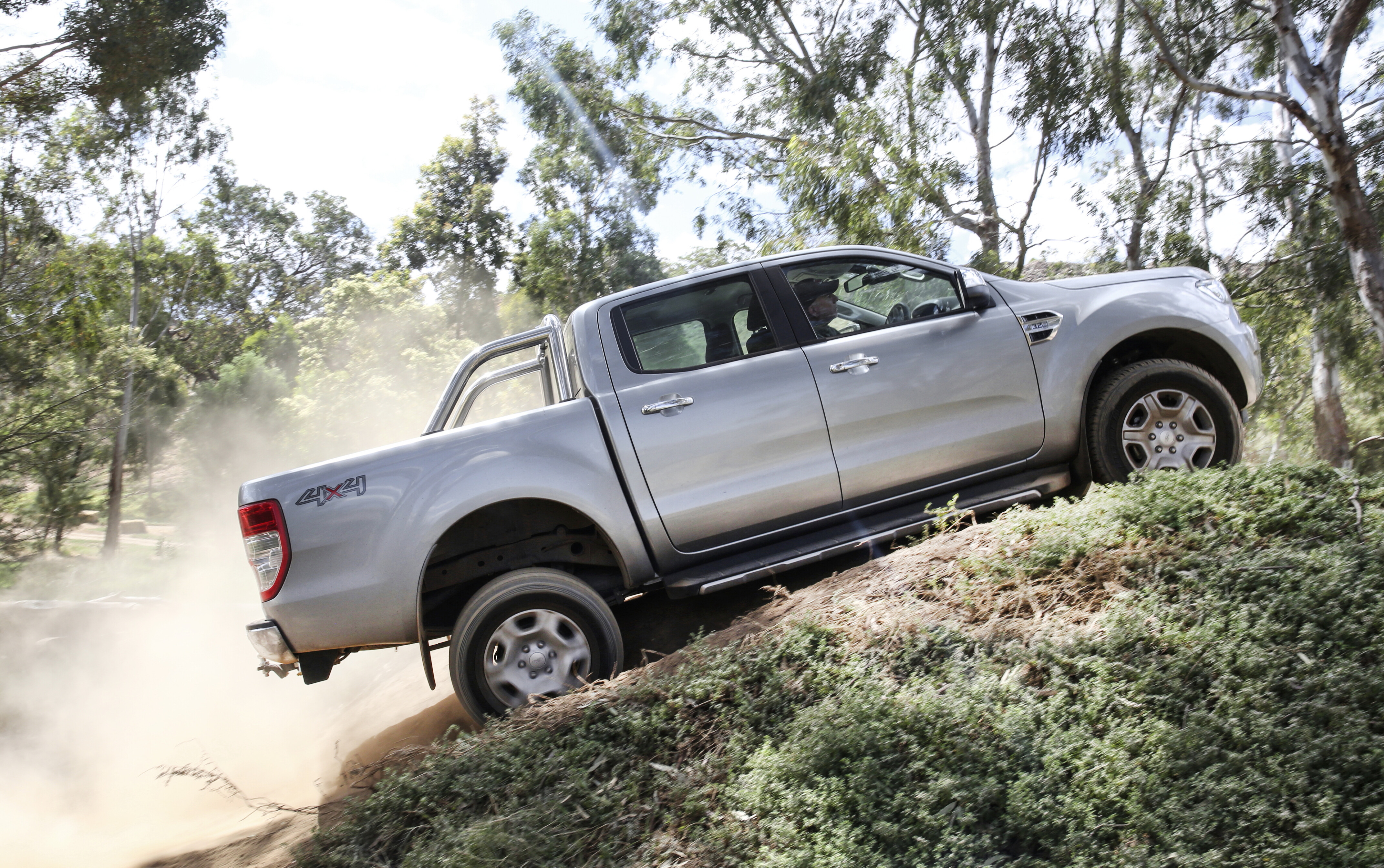
The 2015 update also brought a much more positive shift for the previously vague and sometimes awkward manual box as mated to the 3.2, while a revised turbo and fuel injection brought a fatter mid-range to the 3.2, even if the maximum torque and power numbers didn’t change. The revised 3.2 was notably quieter too.
At the same time, the Ranger also gained electric power steering (EPS), which is more than useful in tight off-road situations given the Ranger’s long wheelbase. The counter argument against EPS is that it isn’t as robust as conventional hydraulically-assisted power steering, which is why Toyota didn’t introduce EPS on the Hilux.
Non-Raptor Rangers with the new 2.0-litre bi-turbo are a match for late-model 3.2s for off-road capability, but the high-tech powertrain isn’t as relaxed off-road, the low-range shifting of the 10-speed not being as seamless as it could be. That issue is, however, swept aside by the Raptor, whose bespoke suspension, including coil springs at the rear, elevate the Raptor to the pinnacle of showroom stock off-road performance in this class. No mods needed … except, perhaps, a petrol V8. Pity also that Ford didn’t see fit to ‘Raptorise’ the 3.2.
Volkswagen Amarok – 2011 to current
The Amarok arrived in Australia in early 2011, more than 10 years ago. Initially, 4×4 models came with a four-cylinder 2.0-litre diesel, which was surprisingly lively thanks to its sophisticated bi-turbo arrangement, but in 2015 a 3.0-litre V6 turbo diesel arrived to really liven up the party.
The unique thing with the Amarok is that it comes with two very distinct drivelines. With either the four-cylinder or V6 engine, the manual gearbox is mated to a dual-range part-time 4×4 system, while the automatic with both engines is mated to a single-range full-time 4×4 system. While it might seem odd, it’s actually the single-range auto driveline that generally works best off-road.
To be 100 per cent accurate, there’s actually a third driveline that was available for a short period early in the Amarok’s life. It combined a manual ’box with a single-range full-time 4×4 system. Great on road, although near useless off-road. That odd variant aside, the Amarok does well off-road essentially off the back of good wheel travel, which is on a par with leaf-sprung Rangers, even if a little short of the Hilux; and has decent ground clearance too.
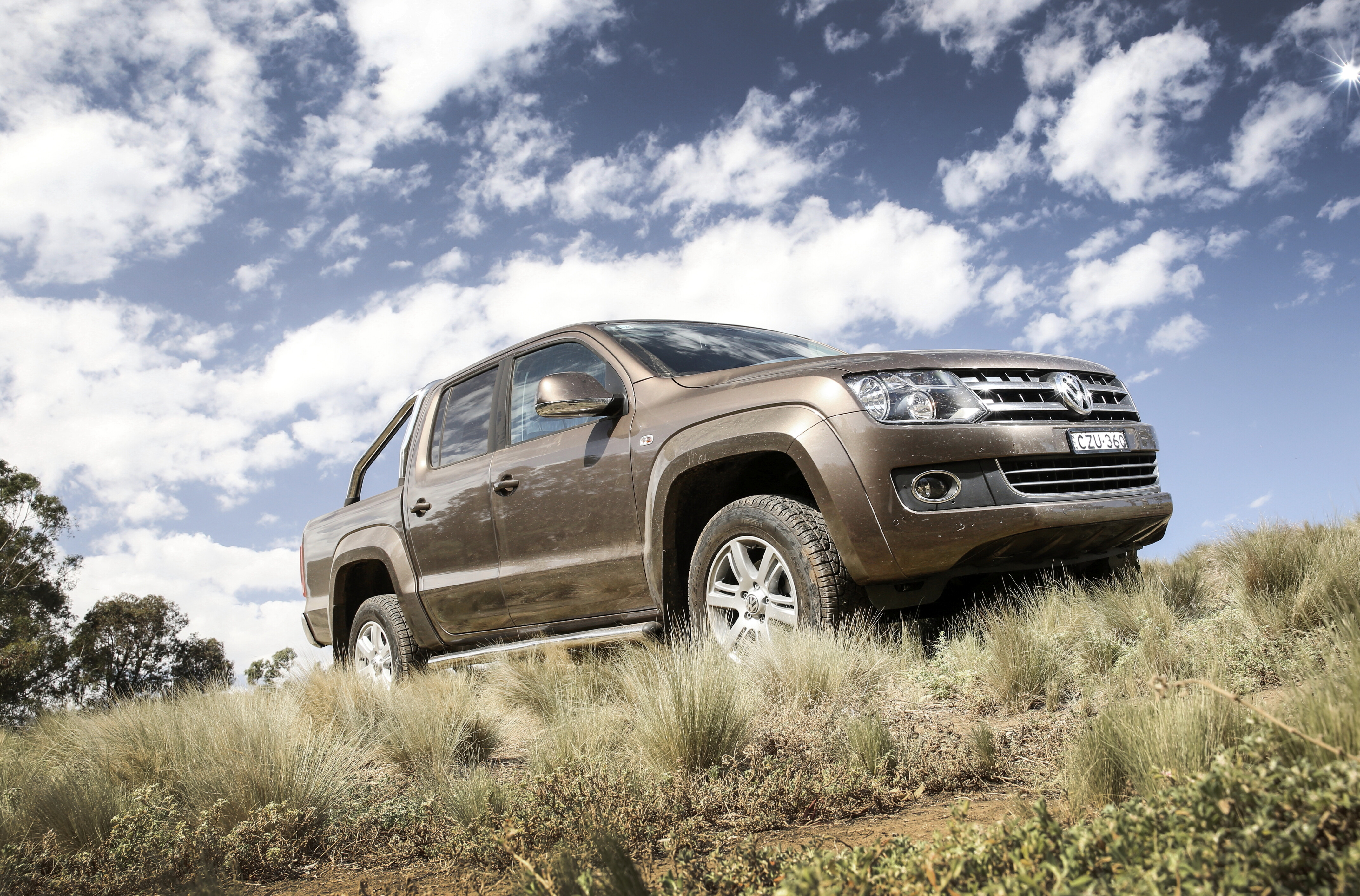
The manual versus automatic distinction – for both engines – mentioned earlier, starts with the interaction between the driver-switched rear locker, which is standard on all 4×4 models, and the ETC. With the manual when you engage the rear locker, the ETC is completely disabled. With the automatic, the ETC stays active on the front wheels when the locker is engaged which makes a big difference in extreme conditions.
The automatic, with its full-time 4×4 system also has an electronically controlled centre diff which can send the drive to the wheels that can best use it but can automatically lock up if need be. The manual’s part-time system doesn’t have a centre diff, just a conventional two-speed transfer box. You’re either in two- or four-wheel drive with 50/50 front/rear drive – no torque transfer front to rear.
The argument for the manual is that it does have low range, so a potential advantage when towing an off-road trailer in steep country or on soft sand. As it is, the auto gets away without low range as its torque convertor has a notably high stall ratio that allows lots of slippage to lower the effective gear ratio. First gear in the eight-speed auto is reasonably low too, which helps. Both the four-cylinder and V6 have eight-speed ZF autos, but the V6’s is more heavy-duty given the V6’s higher torque outputs (up to 580Nm).

The automatic with its single-range full-time 4×4 system also wins over the manual on ease of driving, as it can go from highway cruising to off-road crawling without the driver doing anything.
The auto V6 is better than the auto four-cylinder off-road, but its big leap forward is on-road where you can make full use of the extra power. The manual V6 is also a very enjoyable on-road drive thanks to the ‘grunt everywhere’ nature of the engine.
All Amaroks, four-cylinder or V6, manual or automatic, also offer class-leading on-road dynamics. If you like a sporty on-road drive, this is the ute for you. But given the platform’s age, if you want all the latest safety tech, this isn’t the ute for you.
Mazda BT-50 – 2012 to 2020
In a departure from previous practice, where Mazda utes were actually Mazda designs, the BT-50 that arrived in late 2011 was essentially the same vehicle as the Ford Ranger released at the same time.
Mazda had some presence at the design stage of this new model, and tweaked a few mechanical things (suspension spring rates and steering rack ratio, most notably) for its end product, but otherwise, the BT-50 was essentially the same mechanical package as the Ford. Mazda did, however, go its own way with the front- and rear-end styling, interiors, equipment and the model range, all of which accounted for the major differences between its BT-50 and Ford’s Ranger.
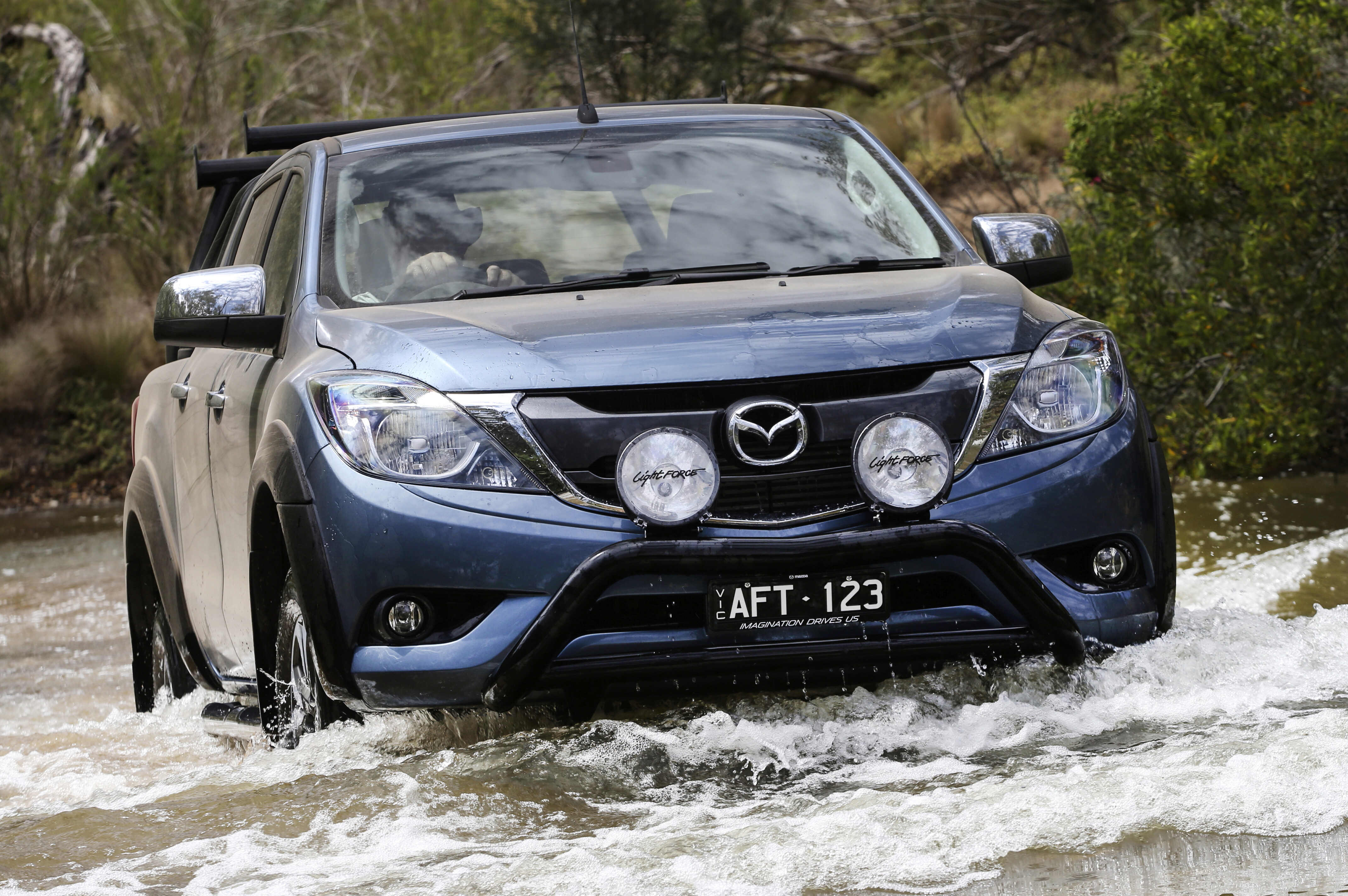
The mechanical similarity between the Ranger and the BT-50 serves the Mazda well off-road. There’s the same good wheel travel, decent effective ground clearance despite the long wheelbase, and standard rear locker on 4×4 models. Likewise, it had the same grunty 3.2-litre five-cylinder diesel mated to either the same six-speed manual or six-speed ZF automatic of the Ford. Unlike Ford, Mazda didn’t, however, offer the 2.2-litre four-cylinder diesel in 4×4 models.
If the BT-50 and the Ranger started out the same, they didn’t end up the same, as Mazda didn’t adopt the significant upgrades to the BT-50 which made the Ranger a much better ute from 2015 on, nor the Ranger’s later powertrain options.
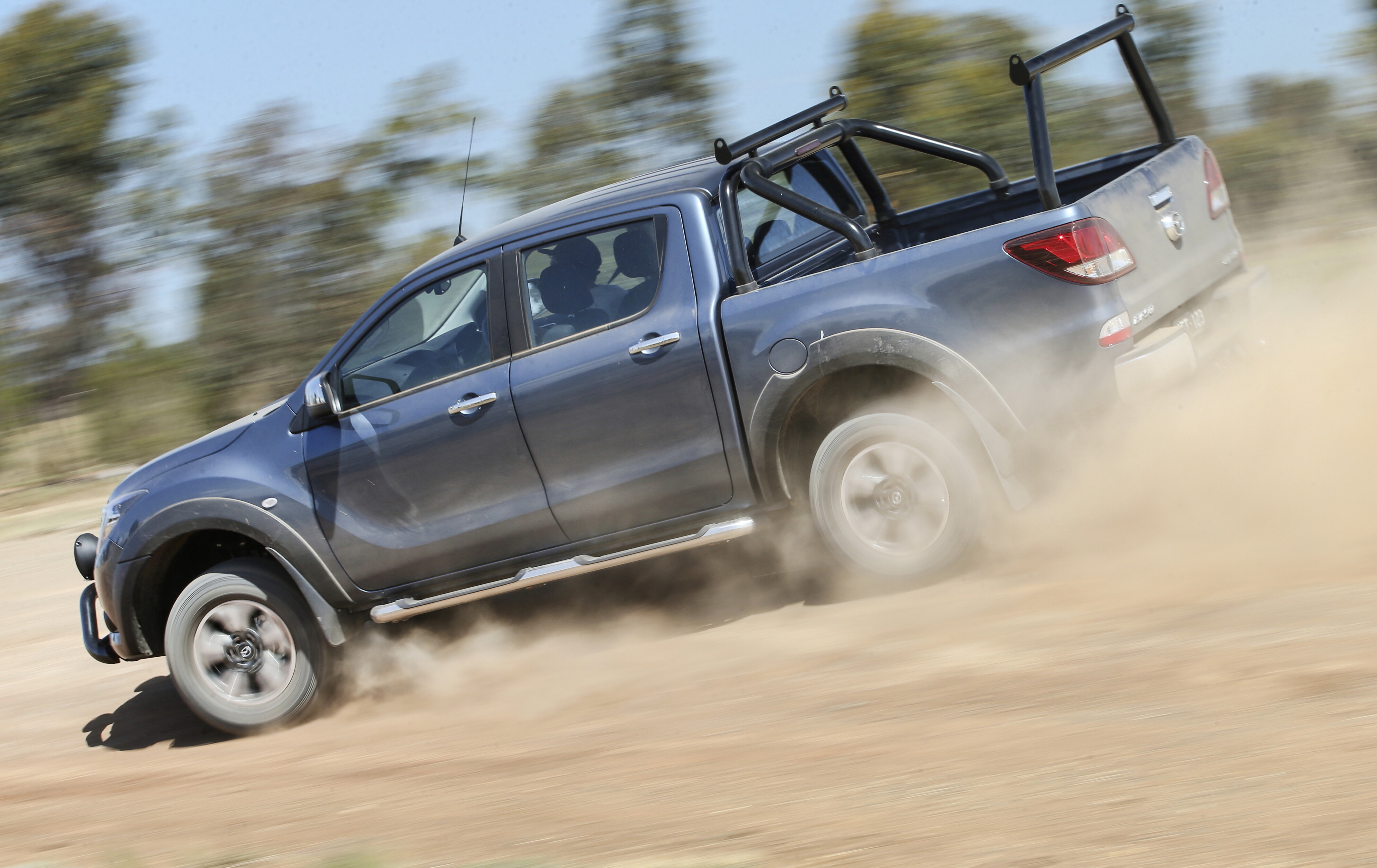
So the BT-50 that appeared in 2011 was much the same mechanically as the one that bowed out in 2020 when it was replaced by the current Isuzu D-MAX-based BT-50. Along the way, the various upgrades involved styling and equipment only.
For off-road use, that means engaging the BT-50’s rear locker which kills the ETC at both ends of the vehicle, unlike post 2015 Rangers where the front ETC is kept active. There’s a notable difference there alone.
Nor did Mazda fix the manual’s somewhat awkward shift, as did Ford in 2015. Nor did Mazda adopt the Ranger’s electric power steering or upgraded mid-range-enhancing turbo and injection systems. For all that, the 2011-2020 BT-50 is still a very useful off-road ute.
Holden Colorado – 2012 to 2020
You may not be able to buy a new Holden Colorado anymore, but second-hand examples of the Colorado that first arrived here in 2012 aren’t too hard to come by.
Just as the Ford Ranger and the Mazda BT-50 that arrived the year before flipped the product-provider product-receiver relationship, the 2012 Colorado was a General Motors product through and through and not just a rebadged Isuzu as was the original Colorado ute (confusingly), and all the Rodeo utes before that. Like Ford, General Motors saw the growing importance of the global ute market and was keen to give it its – own – best shot.
The Colorado came with a VM Motori-sourced (GM owned 50 per cent of VM Motori at the time) 2.8-litre four-cylinder diesel mated to either a five-speed manual or a six-speed automatic, both GM designs. In 2014, the manual ’box gained an extra gear and the engine gained more power and torque, up to a then class-leading 500Nm with the auto ’box.
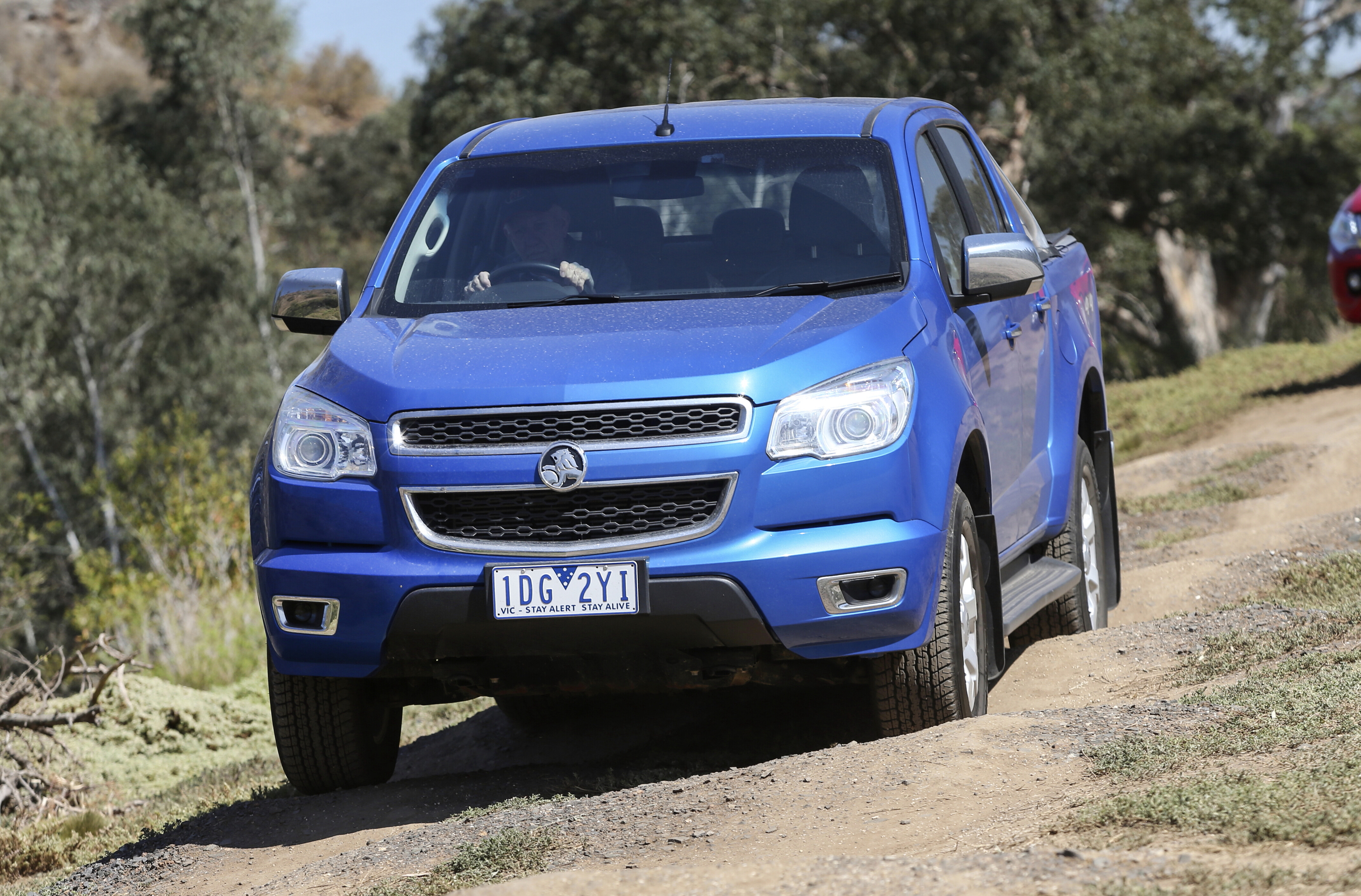
The Colorado employed part-time 4×4, the default system in the class, but somewhat unusually, didn’t come with a driver-switched rear locker on any variant; although, it did come with a rear limited-slip diff, which was also unusual. The limited-slipper was fitted in addition to the ETC, but was more of an on-road aid rather than an off-road aid.
Crucially, the Colorado is a mid-field runner in terms of wheel travel, not up with Ranger or Amarok but better than the Nissan Navara D23 and the 2015-to-current Triton. With only moderate wheel travel, no rear locker and an ETC calibrated more for on-road use (although still useful off-road), the earlier iterations of the Colorado aren’t standout off-road performers. The manual, with its moon-shot final drive gearing, was especially compromised off-road and needed low-four even in easy off-road conditions where competitor utes were happy in high-four.
Things, however, took a big turn for the better when a bottom-to-top re-engineering of the Colorado announced in late 2016 came to fruition in the 2017 model. Most significantly, the ETC was completely recalibrated and went from being mildly useful off-road to very effective.

Gnarly climbs that would stop the earlier Colorado could now be conquered thanks to the upgraded ETC, even if the Colorado still had to work hard to get there. The manual also gained a much shorter final-drive ratio (4.1:1 vs 3.73:1), so no longer required low range at the first hint of off-road driving.
A raft of other changes to the engine, auto gearbox, chassis and body also did much to improve the previously poor NVH, while new suspension springs and dampers and the introduction of very nicely calibrated electric power steering also did much to improve the general driving experience. Put simply, if you’re after a used Colorado, the 2017 and later models are worth the extra coin.
The Colorado-derived HSV SportsCat with its reinforced front spring towers, bespoke suspension and wheel-tyre package, is both better off-road and better on-road than a stock Colorado. HSV SportsCat+ models add serious brakes and auto-decoupling rear swaybar.
Isuzu D-MAX – 2012 to 2020
The Isuzu D-MAX that debuted in 2012 and bowed out last year, represented a departure from the way that Isuzu usually ‘did’ utes. Unlike the original D-MAX sold here (from 2008) and all the various Isuzu utes before that (sold in Australia as the Holden Rodeo), it wasn’t 100 per cent Isuzu.
Instead, it was based on the GM-developed and designed Holden Colorado released at the same time, sharing the Colorado’s ladder frame, the main front suspension components and body structure. To those basics Isuzu then added its own engine, drivelines, suspension springs and dampers, exterior body panels and interior fit-out, among other details.
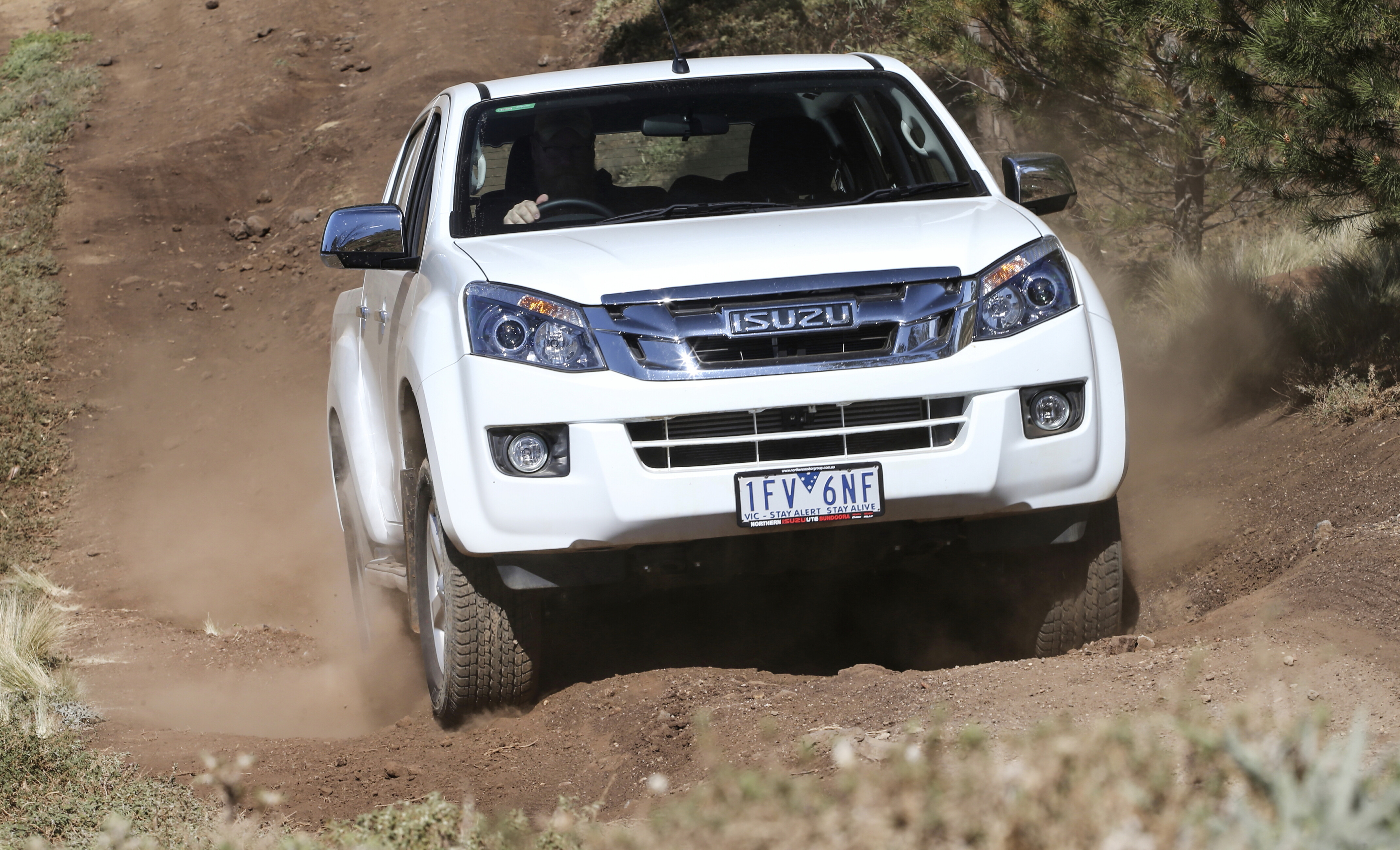
The modestly performing 3.0-litre four-cylinder diesel was, at the time, the latest iteration of an engine that had served Isuzu well since 2004 and was originally offered with five-speed manual and automatic gearboxes. The only major changes for this generation D-MAX occurred for the 2017 model year, when mandatory Euro 5 emissions compliance saw a revised engine with a diesel particulate filter (DPF) and a much healthier torque output. Six-speed manual and automatic gearboxes also replaced the previous five-speed units.
Like the Colorado, the D-MAX’s wheel travel is mid-field and doesn’t match that of the Hilux, Ranger or Amarok, although betters the Triton and the Navara amongst contemporary models. Again, like the Colorado, there’s also no driver-switched rear locker regardless of spec.
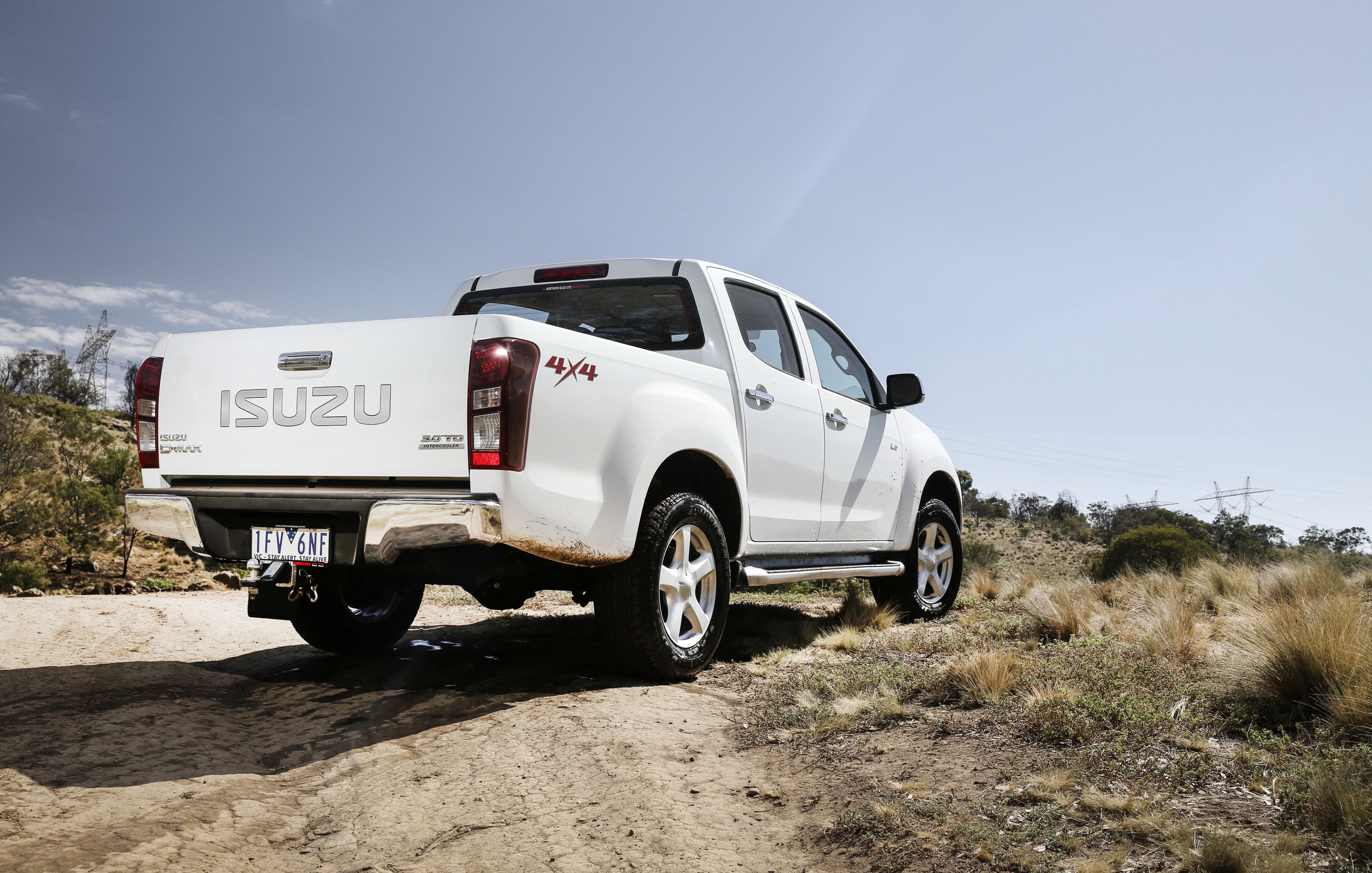
Electronic Traction Control was, however, standard across the range, but was there primarily to limit wheel spin on wet bitumen or otherwise slippery roads and wasn’t specifically tuned for off-road conditions, even if it still helps. Unlike the Colorado, there was also no mid-life adoption of off-road specific ETC.
All of which means that the 2012 to 2020 D-MAX isn’t an off-road star and didn’t get better off-road during its model life, even if many other things did improve.
Interestingly, the new generation D-MAX that arrived late in 2020 has gone back to a 100-per-cent Isuzu design. Among other things, it has gained more wheel travel and a rear locker and is better off-road as a result, but still not to class-best standards.
Mitsubishi Triton – 2015 to current
The current generation Triton arrived here in mid 2015 as the MY16 model. It was not, however, an entirely ground-up new design but more a thoroughly reworked version of the previous generation where Mitsubishi’s engineers pulled everything apart, added new parts where necessary and put it back together again.
The changes were headlined by an all-new 2.4-litre diesel four-cylinder designed to meet upcoming Euro 5 emission regulations. It was smaller, yet more powerful than the engine it replaced, a common theme with diesel development in the last decade. An all-new and slick-changing six-speed manual gearbox was also introduced, while the five-speed automatic was carried over from the previous generation model.
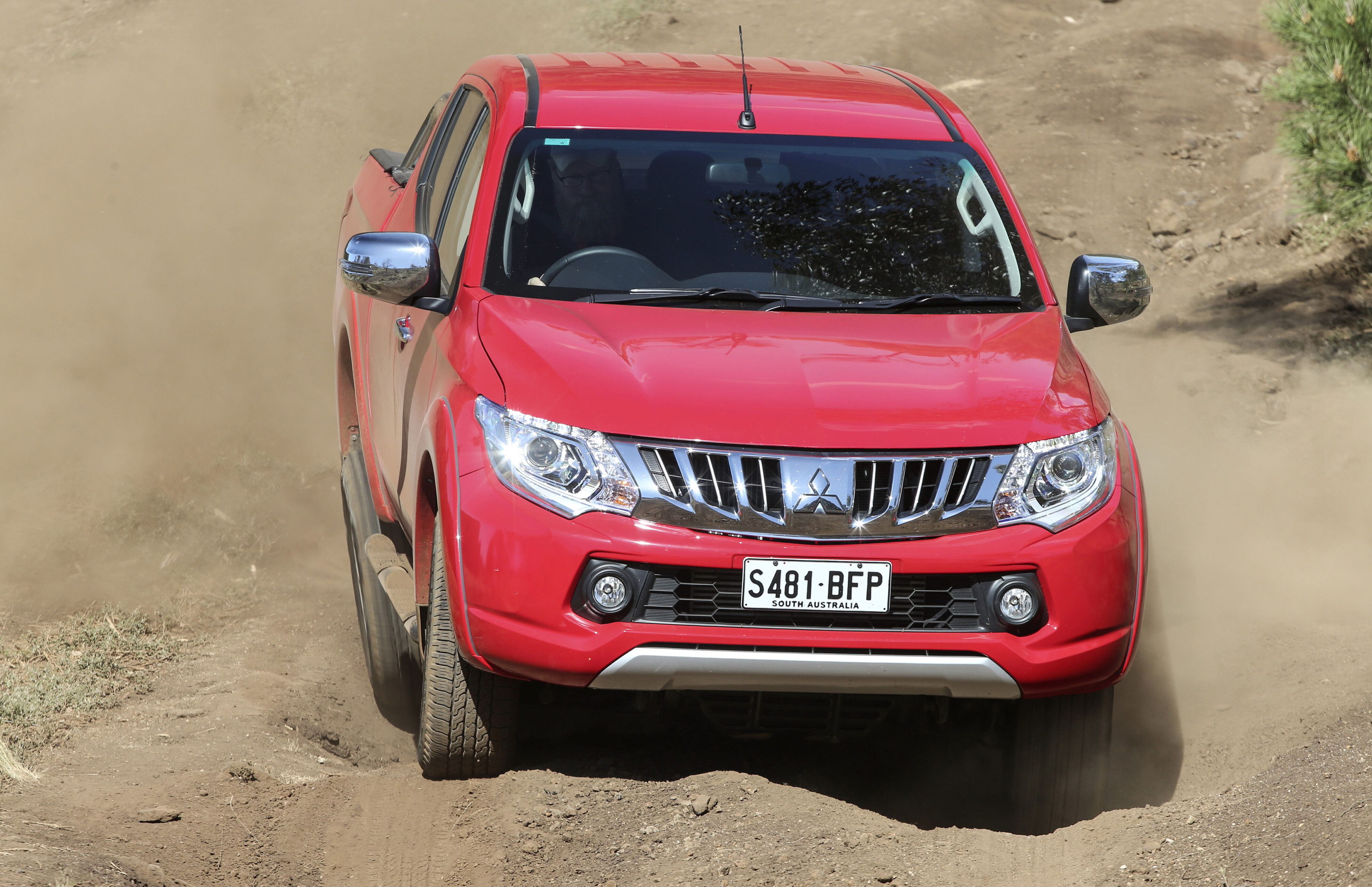
Lower-spec (GLX) models were fitted with conventional part-time 4×4, while mid (GLS) and top (Exceed) models were equipped with Mitsubishi’s unique centre-diff equipped ‘Super Select’ system that offers both full-time 4×4 (for on-road use), as well as the option of rear-wheel drive only.
The main benefit of this is being able to use four-wheel drive on the road (which you can’t do with a conventional part-time system), which brings safety, driveability and convenience benefits. Off-road it offers some convenience benefit in easy conditions, but when things get tough, it effectively works the same as part-time 4×4 once you lock the centre diff and/or select low range.
What defines the Triton more is its modest wheel travel, which is down with the tailenders in the class. The GLS, GLS+ and Exceed models did have a driver-switched rear locker (later limited to Exceed and limited edition GLS Sport models), but engaging the rear locker cancels the ETC on the front as well as the back wheels, so engaging the rear locker is more of a win-lose situation.
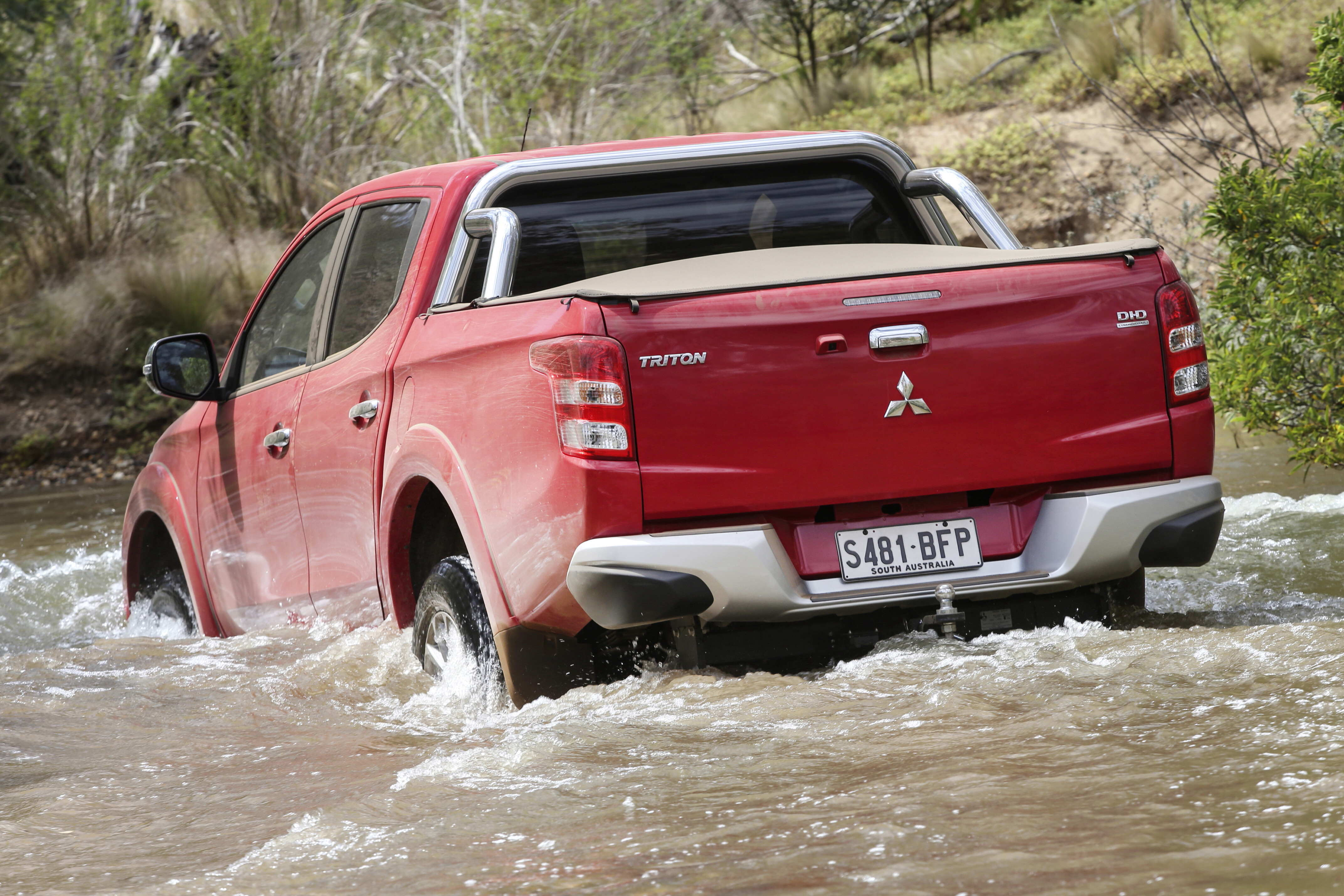
For its part, the ETC (at least up until the 2019 model) was aimed more at on-road use, so wasn’t terrific off-road anyway. In the wash-up in some off-road situations, the Triton was better with the locker engaged, but other times it was better without it.
The 2019 upgrade, which centred on extra safety kit and a new six-speed automatic gearbox, also brought driver-switchable terrain-specific off-road ETC/ESC/powertrain programs on models fitted with Super Select, which was a notable improvement but still leaves the Triton with modest off-road ability compared to the best in class. It’s relatively short wheelbase and compact dimensions are, however, a bonus in tight off-road conditions.
Nissan Navara – 2015 to current
The current D23 Nissan Navara arrived in mid-2015 and replaced both the well-regarded D40 and the older and underwhelming D22 in lower-spec models. It was initially marketed as the NP300 but that tag was dropped at the first remake, of which there have been three, a little over 12 months later.
The keynote feature of the D23 dual cab was the use of coil rather than leaf springs at the rear of all but the base-spec work-grade model powered by the less powerful (single-turbo) 2.3-litre diesel engine. Mid- and top-spec models received a more powerful 2.3-litre bi-turbo diesel engine, both engines being sourced from Nissan’s major alliance partner Renault.
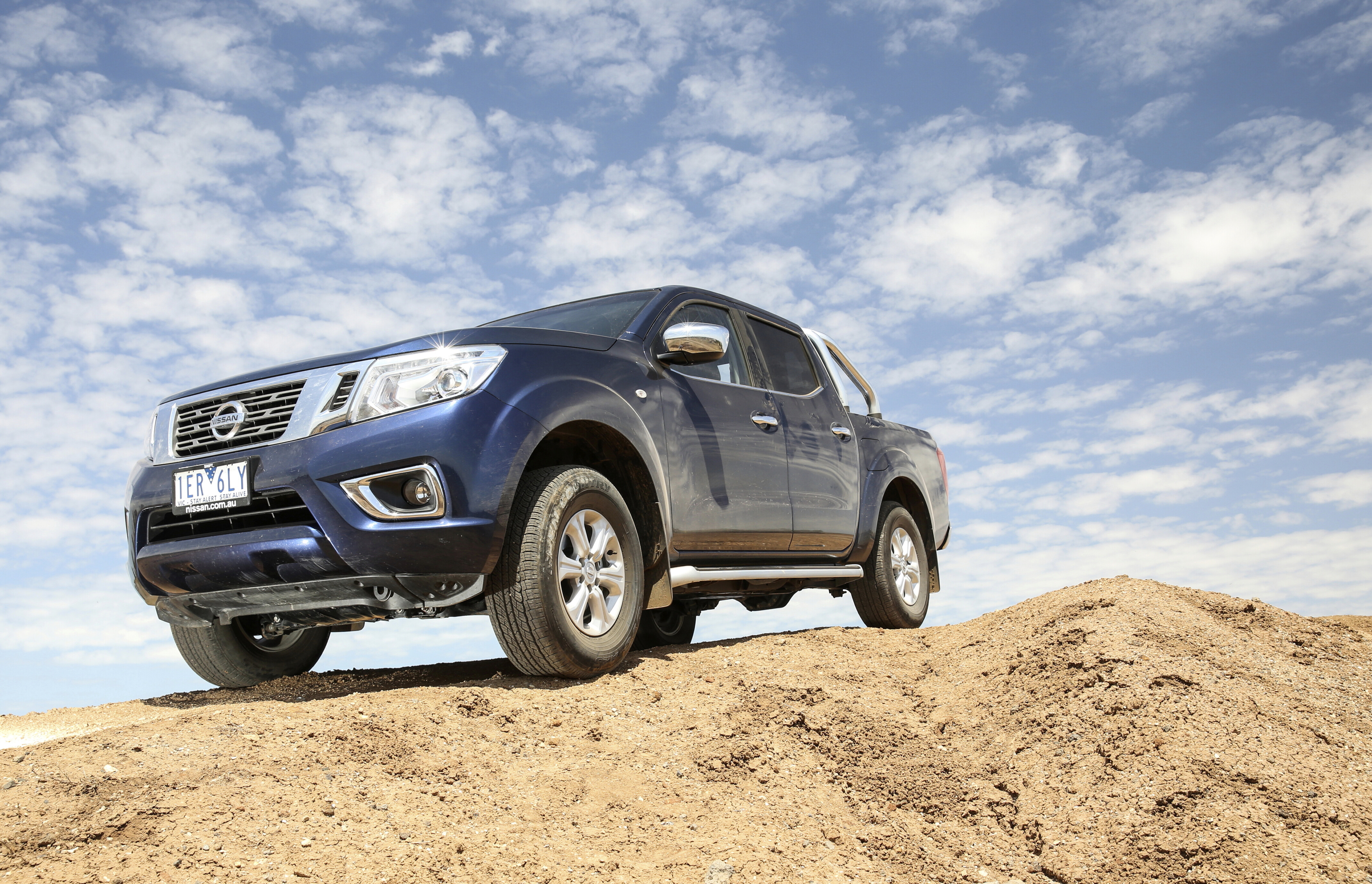
The coil springs, rather than leaf springs for the rear live axle, could have delivered excellent wheel travel, but they didn’t. Engineering-wise this should have been the relatively easy part, but it seems that off-road ability was never a high priority for Nissan’s engineers when they designed the D23. Given dual-cab utes fulfil many and diverse roles, hence their global popularity, Nissan put its priorities elsewhere (in contrast, Toyota’s engineers placed off-road ability high in the priority list for the current generation Hilux).
Up-spec D23s did, however, come with a driver-switched rear locker, and engaging the rear locker did keep the on-road-tuned ETC active on the front wheels, so a tick there. But none of this was sufficient to effectively overcome the inherently poor wheel travel. The Navara’s ground clearance – on standard suspension and wheel/tyre package – is also the poorest of its peers, and while you can improve this with suspension and wheel/tyre changes, you’re still starting from the backmarker position.
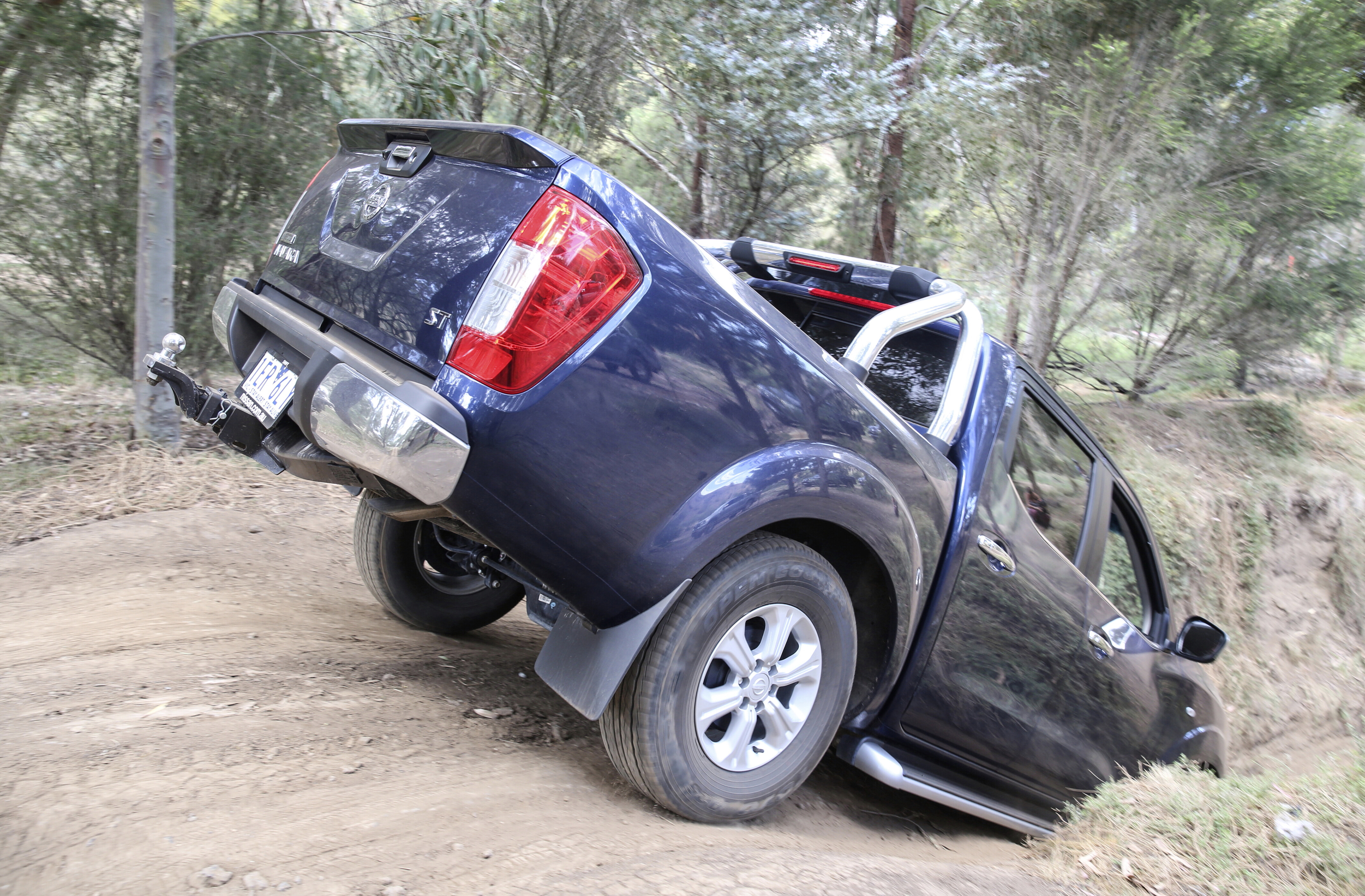
Mercedes-Benz, a minor-alliance partner of Nissan, used the D23 as the starting point for its X-Class ute (released in 2018) so as to get on to the fast-growing global ute market bandwagon more quickly, but despite throwing a lot of chassis engineering at the D23 (and a Benz V6 diesel powertrain in the high-end model to boot), X-Class production tellingly only lasted a mere two and a half years.
While Nissan has carried out several updates to the Navara D23 since its launch, with much retuning of the suspension which has improved the general driving and load carrying to a point, only the locally developed (by Premcar) N-Trek Warrior (2019) moved the off-road game on significantly.
While Premcar’s primary focus was making the Warrior better off-road, it was also much improved on road and a much more impressive chassis makeover of the D23 than that achieved by Mercedes-Benz. The recently updated Navara range now includes the PRO-4X and PRO-4X Warrior, which is again a Premcar development.

